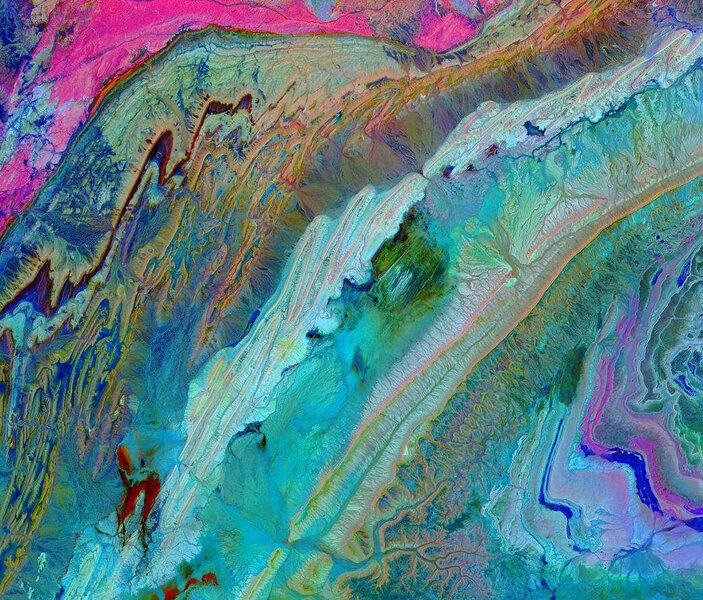Create a free profile to get unlimited access to exclusive videos, sweepstakes, and more!
If aliens exist in our galaxy, you can most likely find them hanging out on the oldest planets

Earthlings have been searching for and sensationalizing aliens since we found out other planets existed, but which ones is E.T. most likely to call home?
Some of the oldest planets in our galaxy are the most likely to be crawling with life (at least as we know it). Earthlike planets need more than water and oxygen. They need plate tectonics. While we often associate plate tectonics with natural disasters like earthquakes, mudslides and volcanic eruptions, it is the innards of the planet behind those same phenomena that can make it habitable. Planetary researcher Craig O’Neill, director of the Planetary Research Centre at Macquarie University, ran simulations to see how a planet’s insides that can be conducive to life—or not.
“In the absence of anything else, plate tectonics can slowly warm a planet up, as its volcanism continually replenishes the atmosphere in these gases over geological timescales,” O’Neill, who recently presented his findings at the Goldschmidt Conference and will soon be publishing that study in Icarus, told SYFY WIRE. “Plate tectonics controls most of Earth's volcanism. The most important volcanic products (by volume) are not lava or ash, but carbon dioxide and water vapor, both potent greenhouse gases.”
Earth was a fireball of erupting volcanoes when it was born. As its hot iron core cooled, so did the liquid mantle, with the bubbling magma on the surface solidifying into its crust. The earlier a planet formed, the better, because that only gave it more time to cool down outside and in. Plate tectonics started after the crust cooled enough to break into plates. Subduction, or the sinking of a plate sideways and downward into the mantle under another plate. This process also triggers volcanism and other phenomena that keep our planet alive.
It is believed that the Snowball Earth state which happened 600-700 million years ago finally melted because of the greenhouse gases released by phenomena related to plate tectonics.
“Plate tectonics also controls the processes that remove CO2 from the atmosphere,” O’Neill explained. “It creates topography and mountains, which weather down and remove CO2 from the atmosphere. This is called the CO2-silicate weathering cycle, it's the biggest sink of CO2 over geological timescales."
There would be too much carbon dioxide in the atmosphere for us to breathe if plate tectonics did not exist on Earth. Plate tectonics are what created mountains and other topographical features that remove CO2 from the atmosphere as they weather down, otherwise known as the CO2-silicate weathering cycle. When plates subduct, they take carbonate-rich sediment away from the surface. If temperatures grow too hot, torrents of rain pour down, and CO2-silicate weathering brings greenhouse gas emissions up as it increases. Inversely, if the planet gets too cold, that weathering freezes to a halt, but greenhouse gases continue to increase because they are still belched out by volcanoes.
“Together these processes act as a negative feedback—a thermostat—on surface temperatures going too extreme in either direction,” said O’Neill.
Planets can’t have that thermostat if their cores are so hot that they prevent the surface from hardening enough to break into plates. Cores that were formed later and have not cooled down enough also get in the way of a magnetic field ever developing, and without a magnetic field, the planet will get radiation-bombed. Mars is now a glacial desert because it lost its magnetic field after all plate tectonic activity ceased. It is usually smaller cores that cool down faster, meaning the mantle also cools off.
Since the core’s iron content determines its size, it is usually planets with smaller, cooler iron-heavy cores that develop plate tectonics. There are exceptions. Even a planet whose core does not have much iron can have a chance at plate tectonics if the core is small enough.
“We found that small-core planets again tend to be cooler, which, together with the way convection happens in their mantle, tends to favor plate tectonics,” O’Neill said. “That was really new, since it was generally assumed very early planets in the galaxy's history, with little iron, would not have plate tectonics. But this is not the case.”
So what are the chances that we will find an Earthlike planet that exhibits plate tectonics and is haven for life? Microbial life was swarming on Earth relatively quickly, and O’Neill believes that billions of years ago, this also could have happened somewhere else—Mars. Earth and Mars swapped many hunks of rock as they were accreting enough material to form into planets, and exchanged a lot of matter in the process. Life was already evolving on Earth by then. Many types of microbes around now live in rock and could probably survive hurtling from one planet to another. Tardigrades could probably handle it (never mind that some of them are chilling on the Moon right now). What was to stop their prehistoric ancestors?
“I would be very surprised if we found no evidence of life on Mars, whether in the deep past, or perhaps still in groundwater today,” O’Neill admitted. “If life got going on one planet during this time, there is a very high probability it infected the other.”
Intelligent life is a completely different animal. Earth took 4.5 billion years, which is around a third of the age of the universe, to spawn humans that could figure out how to blast off into space. Somehow the home planet remained stable this entire time and kept us alive. Whether or not it was the only place in the universe that was able to generate these conditions remains unknown, but O’Neill remains optimistic.
“The number of stars, and planets, is huge,” he said. “So long as the probability is not too small, there is chance there are Vulcans somewhere.”



























